The morning after our dog, Baxter, died, our 2-year-old daughter Ellie walked over to his empty dog bed and waved her hand through the air as though petting an imaginary dog. Then, she fetched a little plate from her toys and brought it over to the dog bed and explained that she was feeding “purple Baxter.”
Ellie sometimes makes up imaginary versions of real things (we have our real vacuum and a purple vacuum that she likes to hide from). I was surprised to learn we had a purple Baxter, but it gave us both some comfort during a hard time.
As a toddler, Ellie doesn’t yet understand life and death. As children grow, their understanding and emotions grow too. Helping Ellie to process Baxter’s death has in some ways been easy and in others hard. She could feel that things had changed for our family, and I tried to help her through Baxter’s death.
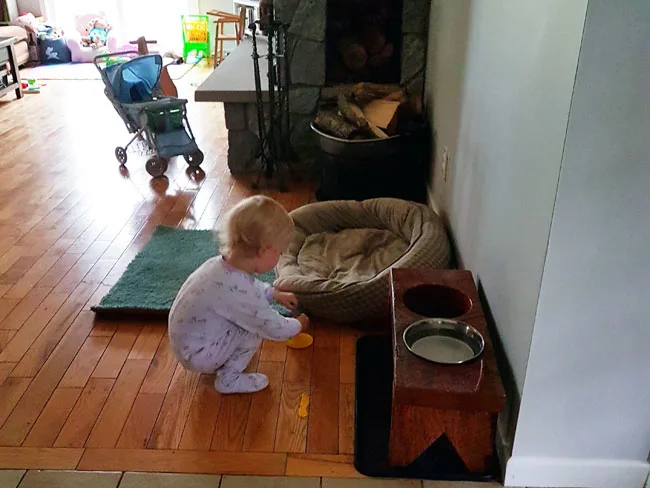
I am not a parenting expert at all, but I’m sharing some of the things I did in the hopes that it might help someone else in a similar situation.
The lead up
As I’ve written previously, Baxter had been sick for several months.
Ellie had seen me lifting him in and out of the car, guiding him through the house, taking him outside more frequently, blocking off the stairs so that he didn’t fall and feeding him by hand. She’d been left with grandparents while I took Bax to the vet, and she’d been to the clinic with me many times to pick up medicine. She’d seen him vomit and fall and get stuck in corners.
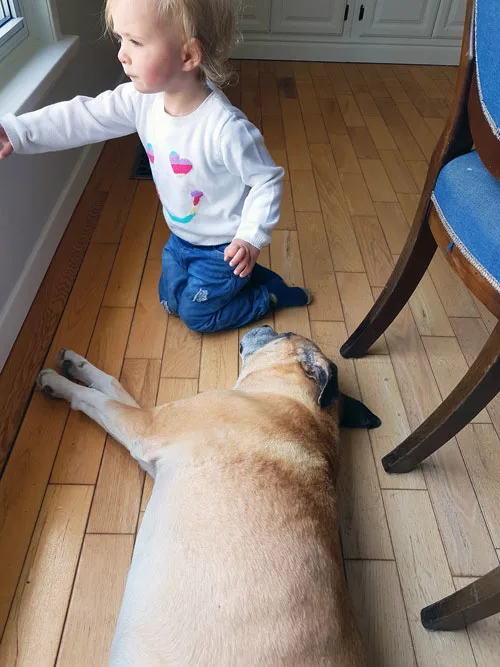
We’d talked about how Baxter wasn’t feeling well. Sometimes I said he was unhappy or his tummy was unhappy because she understood “happy” and “sad” better than “well” and “unwell.” She knew he needed extra care and attention and learned to be (a bit) patient.
Even though she couldn’t take care of him herself, I found it helped to involve her in his care. I did that by talking to her about what we were doing and what he was going through–“It’s time for Baxter’s medicine.” Or “Mama has to take Baxter to the doctor today.” Even this small level of involvement gave her a greater understanding of the situation, more compassion for Baxter and more patience to let me do what I needed to for him.
It also laid the foundation for his death.
The day of our dog’s death
Baxter died at home. In preparing for his death, I felt that Ellie might understand things a bit better if she could see him and see the vet. But I did not want Ellie to watch him die. I knew I wanted to be with Baxter, and I knew I was going to be very upset. Seeing me in that state and seeing the vet inject Bax would likely upset her. My Mom came to look after Ellie so that I could focus on Bax.
If we had had to take Baxter to our clinic for the procedure, I would not have brought Ellie with me. I would have offered her the chance to pet him or say goodbye at home, and found someone to stay with Ellie while I went with Bax.
The death of a pet is extremely challenging. Children add another dimension to that situation. You know your children and yourself. Think about what you all need and try to arrange things to help you all through this hard time.
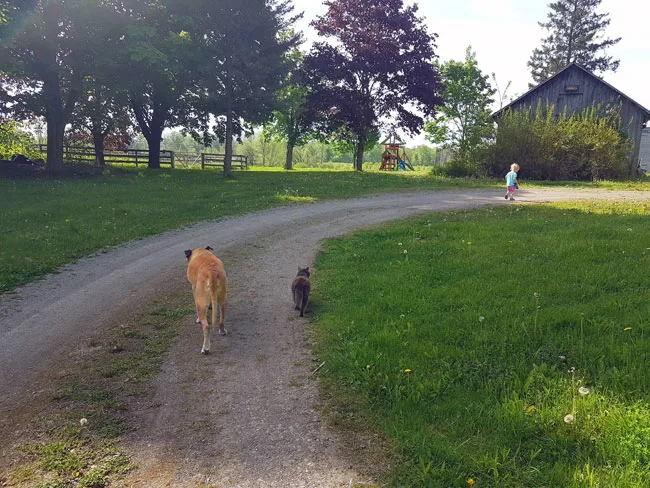
I explained to Ellie that the doctor was coming to help Baxter, but didn’t go into more detail than that.
Before he was euthanized, I asked Ellie if she wanted to pet Baxter. She could sense that something unusual was happening, and she reacted with a bit of uncertainty, so she refused. I didn’t push her to say goodbye or pet him.
My Mom played with Ellie while I stayed with Baxter. After he died—and I’d collected myself a bit—Ellie wanted to see me, so my Mom brought her over to us. Again, Ellie was hesitant to pet him, though she did eventually. I tried to explain that Baxter was too sick. And the doctor couldn’t make him better.
She saw Baxter loaded into the vet’s car, and that became what she latched onto. I heard over and over for months, “Doctor had to take him.”
The aftermath
For Ellie, it sunk in very quickly that Baxter wasn’t home any more. As she peeked into my room the first morning and saw Baxter’s empty bed, she said, “Baxter not here. Doctor had to take him.”
Rightly or wrongly, I didn’t try to explain what it means to be dead. I said that he was too sick, he wasn’t at home anymore and he wasn’t coming back. I tried to be clear that wasn’t like the other times I took him to the doctor and eventually brought him home. Each time I said this, she responded with “Doctor had to take him.”
We talked about how he was sick and wasn’t happy and that the doctor couldn’t make him better.
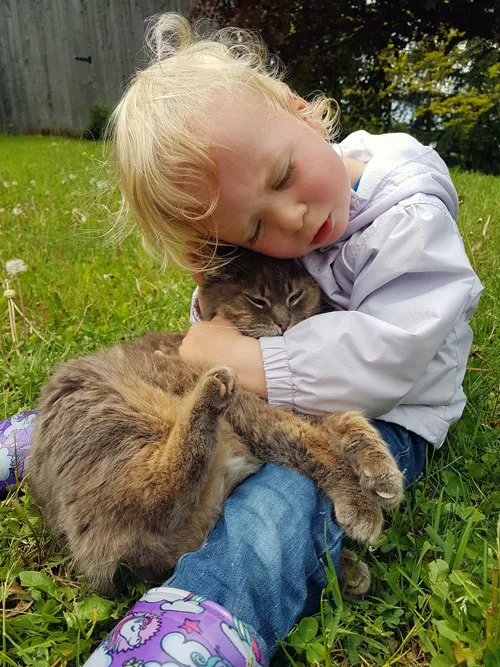
I put a picture of Baxter in her room so we could look at it, say goodnight to it and even pet him sometimes. This was meaningful to her for a few weeks.
Packing up some of Baxter’s things was a bit difficult for Ellie. She didn’t like when his food bowls were no longer in their regular spot. And she unpacked the dog toys several times before I finally snuck some of them out of the house.
Talk about your dog
Ellie talked about Baxter—and still does—every day. The way she talks about him has changed. We no longer have a purple Baxter who needs to be pet and fed. But an imaginary Baxter has started to join all of her stuffed animals for pre-bedtime cuddles.
Nearly three months after Baxter died, Ellie woke up from a nap and said, “Baxter was sick with his stomach? Doctor had to take him? But he will come back!” This was the first time she had talked about him coming back. When I said no, she laid down sad and a little teary.
Later that night, she talked about him again. “He soft. He have squishy nose. And eyes. He smile at me. I pet him. Good puppy. I wuv him.” It was easy to agree with all of these things, and while I may have had a few tears, she didn’t.
I feel that talking about Baxter and interacting with an imaginary Baxter are healthy ways to help a toddler understand a dog’s death. Sadness is part of life, so I’m hoping to help Ellie learn how to deal with her feelings and experience her different emotions.
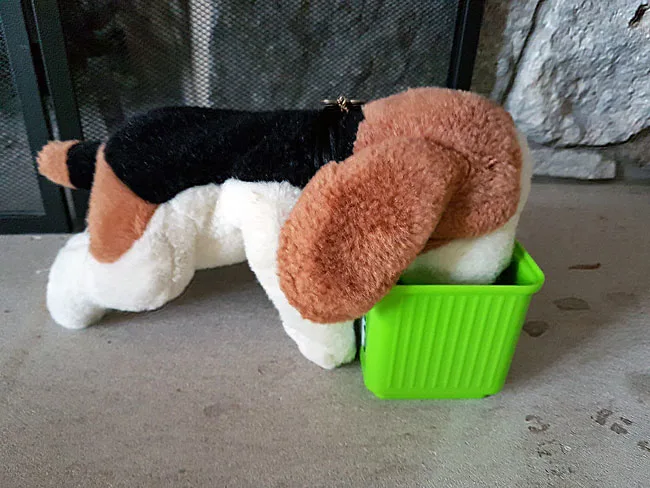
Toddlers are big balls of emotions and they don’t yet know how to express themselves. The death of their dog is a change in their life. They may have trouble sleeping, seem grumpy or clingy as they adapt to their new family.
Patience, understanding, openness and love will help you all to get through.
Talk about the next dog
Ellie loves all animals, but especially dogs. As we talk about Baxter, other dogs that we know and dogs in general, our conversations have turned towards adopting another dog. As a two-year-old, Ellie has no concept of what it means to adopt a dog.
But she’s made it clear that she would like to have a dog of her own again. She says, “We will get a new Baxter.”
I know Ellie will be excited when we get another dog, and especially when she realizes that this is our dog. As much as I want to give her that experience, I’m not quite ready to bring a dog into our family.
But for now, I think it’s lovely that she loves Baxter so much and that he was such an important part of her life that she thinks about our future dog in light of him.
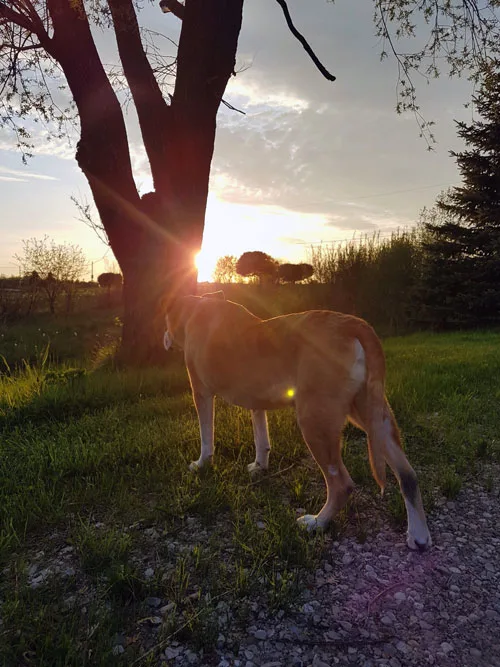
Advice To Help A Toddler Understand A Dog’s Death
Use language your child understands. When I was explaining that Baxter was sick, “unhappy” often substituted for “not feeling well.” If your dog is sick, involve your child in your dog’s care. While she may not be able to give medicine or go to the vet, talking about what you’re doing and what your dog needs are ways to help a toddler understand a dog’s death.
Reach out to family or friends for help. Your dog’s death is difficult and traumatic. Looking after a toddler during this time makes everything harder. Whether you’re at home or at a clinic, planned or unexpected, seek help before, during and after so that you, your dog and your child can be cared for.
Keep your explanation simple, consistent and truthful. Baxter was sick. The doctor couldn’t make him better. He’s not coming home. Don’t lie and say your dog has gone to live on a farm in the country (or somewhere else). Don’t worry about trying to explain what it means to be dead. As your child grows, you can start to explain the situation in a bit more detail.
Follow your child’s lead. If she wants to talk about your dog, talk about it. If she imagines he’s there and involves him in what she’s doing, don’t quash that. And if you feel like talking about your dog, talk about him. It’s okay for you to say that you’re sad or you miss your dog, though I suggest not putting all your grief on your child. My (non-expert, parent-of-one) opinion is that very young children don’t need a lot of encouragement to get in touch with their emotions. My role is to follow her lead and help her experience her feelings.
Accept that a toddler may not grieve like you do. Your understanding of death and your relationship with your dog are different than your toddler’s. She will feel that things have changed and may react with sadness, anger or restlessness.
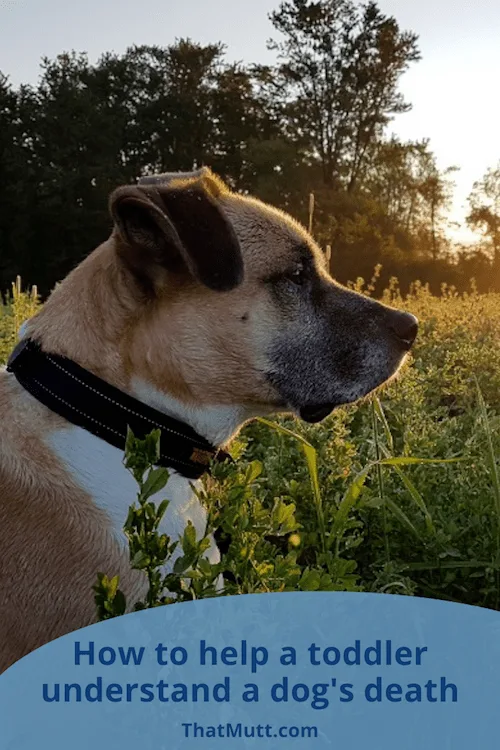
For other parents out there, do you have any advice for how to help a toddler understand a dog’s death?
Julia Preston writes for That Mutt about dog behavior and training, working dogs and life on her farm in Ontario, Canada. She has a sweet, laid-back boxer mix named Baxter. She is also a blogger at Home on 129 Acres where she writes about her adventures of country living and DIY renovating.
Other posts on pet grief:
- Goodbye letter to Baxter
- Do I have to be there when my dog is put down?
- We all grieve in our own ways – dogs and grief
- A letter to myself: When My Old Dog Dies
